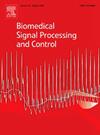Understandable time frame-based biosignal processing
IF 4.9
2区 医学
Q1 ENGINEERING, BIOMEDICAL
引用次数: 0
Abstract
The explainability of biological time series poses considerable challenges regarding signal multiplicity, high volatility, nonstationarity, and noisiness in pursuit of understanding human intentions and conditions. These challenges often arise since data points in the time series are inherently unexplainable and need complex models for proper processing. Here, we propose data frames as a primary information unit. Specifically, the proposed biosignal time frame (BioTF) series incorporates data frames inspired by candlestick components from financial data analysis, such as starting, highest, lowest, and ending values (SHLE). We implement BioTF on four benchmarked biosignal classification tasks, including electromyography (EMG), high-density surface electromyography (HD-sEMG), electroencephalography (EEG), and electrocardiogram (ECG). We study various time frame lengths, components, network activation functions, and architectures for these instances. The bio time-frame representation shows similar patterns, technical analysis, and results to financial data analysis, offering an exciting analogy between these two domains. Compared with several point-based strategies, the proposed BioTF improves temporospatial explainability and achieves as much as 7% improved classification due to the reduced complexity by extracting intuitive features in the proposed frame-based representation. The proposed BioTF furthermore leads to competitive results using simpler networks with as much as four times faster end-to-end training and lighter frame-based feature extraction after-step training. The proposed method enables lightweight and transparent implementations of AI recommendation systems for expert manipulation and trustworthy medical translations of bio time series. The proposed SHLE representation is general and could be extended towards more detailed signal representations.
求助全文
约1分钟内获得全文
求助全文
来源期刊

Biomedical Signal Processing and Control
工程技术-工程:生物医学
CiteScore
9.80
自引率
13.70%
发文量
822
审稿时长
4 months
期刊介绍:
Biomedical Signal Processing and Control aims to provide a cross-disciplinary international forum for the interchange of information on research in the measurement and analysis of signals and images in clinical medicine and the biological sciences. Emphasis is placed on contributions dealing with the practical, applications-led research on the use of methods and devices in clinical diagnosis, patient monitoring and management.
Biomedical Signal Processing and Control reflects the main areas in which these methods are being used and developed at the interface of both engineering and clinical science. The scope of the journal is defined to include relevant review papers, technical notes, short communications and letters. Tutorial papers and special issues will also be published.
 求助内容:
求助内容: 应助结果提醒方式:
应助结果提醒方式:


